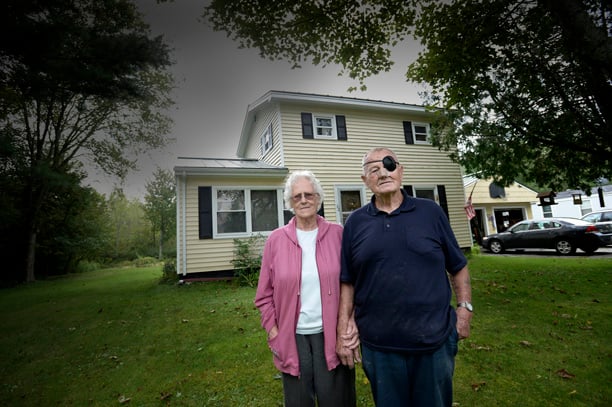Laurette Lauze grew more concerned with every inch of snow that fell during a record-breaking blizzard in February. The fearful experience was the push she needed to finally put her name on a waiting list for subsidized senior housing in Lewiston.
U
nfortunately, Lauze said, she has no idea how long it will take to get an apartment. She could be waiting a while. Some housing authorities in Maine have two-or three-year waiting lists.
Lewiston has 132 seniors waiting for openings in 296 units, according to Residential Initiatives for Maine, a group of public housing officials. Lewiston’s list is short compared to other cities, such as Auburn, where 405 seniors wait for 231 units, Portland, where 580 seniors wait for 439 units, and Brunswick, where 601 seniors wait for 189 units. Some seniors put their names on multiple lists, hoping to increase their chances.
Lauze, 68, hopes she gets into the Frye School Apartments sooner than later. She retired three years ago after working more than 40 years for a fiberglass manufacturer. She’s been thinking about moving into senior housing for a while.
The three-bedroom ranch she once shared with her mother and her sister now consumes most of her $1,200-a-month Social Security check. But it took a blizzard to show her how vulnerable she is.
“Heating, maintenance, repairs – the house is taking everything.”
“Heating, maintenance, repairs – the house is taking everything,” she said. “But that blizzard on Feb. 9 was the last straw. I had 4 feet of snow at the end of my driveway. For a long time, I couldn’t get out and nobody could get in. I felt like an animal in a cage. It scared the crap out of me.”
Because Maine has one of the highest homeownership rates in the nation (71.3 percent) and the sixth-oldest housing stock (27.8 percent built before 1940), seniors here increasingly find themselves with more house than they need and limited finances and physical ability to maintain it, according to the Maine State Housing Authority. Rampant problems include structural decay, outdated heating systems, lack of insulation and weatherization, and accessibility issues such as steep stairs and narrow doorways.
During the last seven years, the authority helped to fund an average of 134 subsidized senior housing units completed each year, making small dents in the need for 8,000 additional units by 2015.
But housing officials and developers say the agency could have done a lot more during the last two years, when interest rates were low and construction companies needed work.
In early 2011, Gov. Paul LePage stopped signing certain federally backed, tax-exempt
bonds issued by the authority. The bonds trigger 4 percent low-income housing tax credits that developers use to build subsidized housing. The move was part of LePage’s effort to control the state’s debt, though tax-exempt bonds are considered a helpful federal subsidy by most states and a good, low-risk investment by private investors.
LePage’s moratorium caused developers to cancel or delay many housing projects, according to the Associated General Contractors of Maine.
Now, there’s a backlog of 13 senior housing projects across the state, from South Berwick to South Portland to Old Town, the Maine Affordable Housing Coalition reports. If funded, they would produce at least 558 units for a total cost of $72.8 million, including $54.7 million in bonds.
“We have very few resources to create housing in Maine, and one of them got shut off. To lose that funding was frustrating and damaging,” said coalition coordinator Greg Payne, a development officer at Avesta Housing, a nonprofit housing developer in Portland.
Payne said his agency has waiting lists that rival Maine’s public housing authorities. Stonecrest II, a 25-unit low-income housing project in Standish that was completed in February, already has a waiting list of 81 households.
“That’s the waiting list after a few months,” Payne said. “What that list is going to look like a year from now is even more frightening.”

Patty Smith
The tale of the caregiver
PLike thousands of other residents of Maine, Patty Smith of Freeport tended dutifully to her ailing mother, only to watch, helpless, as an aging parent stricken with dementia slowly slipped away.

Demographics
The demographics of Maine
With an abundance of baby boomers and not enough babies, the state with the highest median age grapples with a reality that University of Southern Maine public policy expert Charles Colgan says paints a grim economic forecast.

Further Discussion
Here at
PressHerald.com we value our readers and are committed to growing our community by encouraging you to add to the discussion.
To ensure conscientious dialogue we have implemented a strict no-bullying policy. To participate, you must follow our
Terms of Use.
Questions about the article? Add them below and we’ll try to answer them or do a follow-up post as soon as we can.
Technical problems? Email them to us with an exact description of the problem. Make sure to include:
- Type of computer or mobile device your are using
- Exact operating system and browser you are viewing the site on (TIP: You can easily determine your operating system here.)









